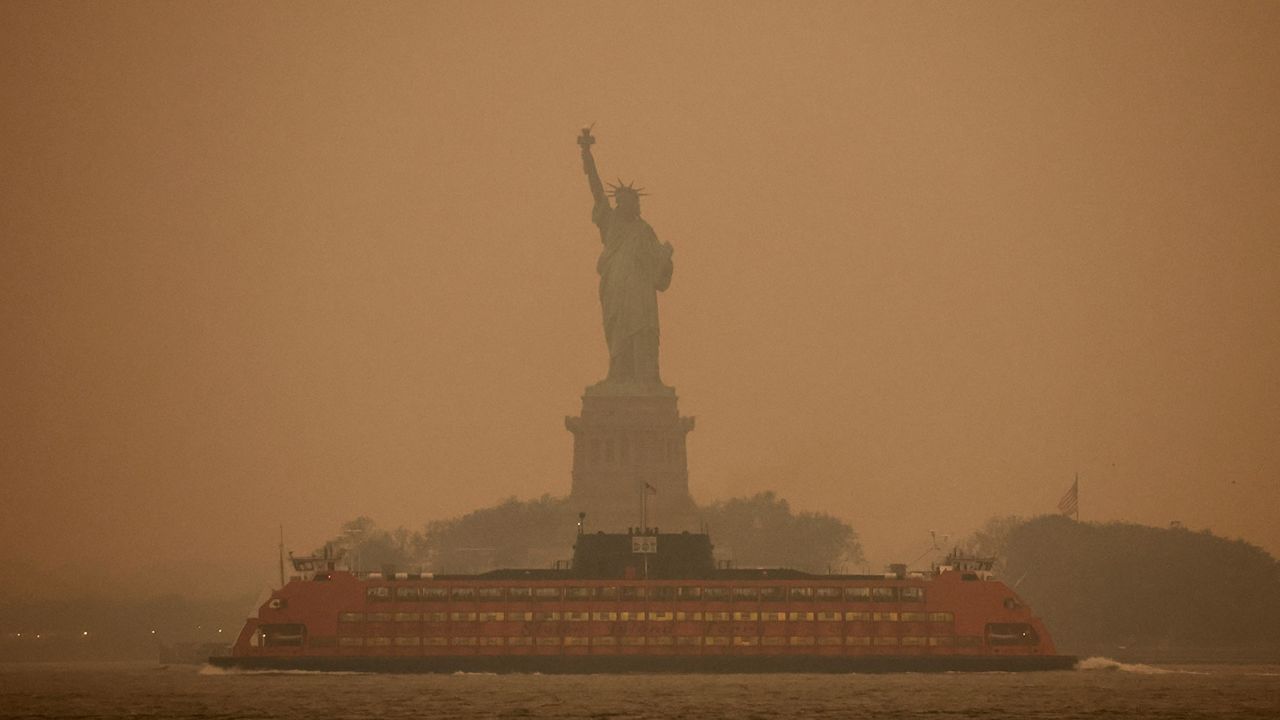Millions of people in the US are under air quality alerts as smoke from raging Canadian wildfires sweeps down the East Coast. Some schools in New York and Washington are canceling outdoor activities, and airports are facing delays or ground stops due to poor visibility.
The smoke can also cause health problems such as trouble breathing, burning eyes, dizziness, headache or nausea. Doctors say people whose symptoms are getting worse should get medical attention.
Here’s how doctors answered some of the top questions about the smoke:
Why does wildfire smoke make it so difficult to breathe?
Dr. Shilpa Patel, medical director of Children’s National IMPACT DC Asthma Clinic in Washington, explained that wildfire smoke is “small, very tiny particulate matter that goes deep into the airways. It’s not an allergen; it’s an irritant. And so an irritant can affect anyone’s lungs and cause you to start coughing and feeling that throat itchiness.”
Is there any way people can be protected while outside?
Our bodies do come equipped with some natural protection, according to Dr. Aida Capo, a pulmonologist with Hackensack Meridian Palisades Medical Center in New Jersey.
“Our nasal hairs can protect us from a lot of these particles. But these are really small particles from the wildfires, so it’s not enough,” Capo said.
“The recommendation is not to be outside, but if you want to wear a mask to help, absolutely wear one and then make sure it is an N95, not a surgical mask. A surgical mask’s not going to protect you from getting these particles in your airways, because it’s just not quite enough. If you have to be outdoors for an extended length of time, an N95 will decrease some of these small particles in your airways, but they have to be worn appropriately, and it’s hard to wear an N95 for an extended length of time,” she said.
Patel said you should avoid any kind of strenuous physical activity like running or jogging. You should also be in tune with your body throughout the day. The air quality could affect you later “because these are small particulates, so they go deep into your airways, and the response could be a little bit delayed,” Patel said.
What helps air quality indoors?
Close your windows and turn on your air conditioner and air filters, Capo recommends.
Dr. Peter DeCarlo, an associate professor in the Department of Environmental Health and Engineering at Johns Hopkins University, agrees.
“Indoors are generally about half or less the concentration of air pollutants from outside when it comes to particles, which is what we’re concerned with here. And that all goes away as soon as you open your windows and doors and just let free-flowing air come in,” he said.
Read more from doctors.










